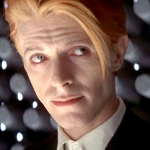- GonSmithe
- Apr 25, 2010
-

Perhaps it's in the nature of television. Just waves in space.
|
I said it in the GBS JW thread, but Jesus, I cringed every time Ruby Rose used ASL. It was just painfully bad.
It was a fun sequel, even if the suit was a little silly. Using the lapel to block headshots.
I just have one question about the subway fight with Common. How the Hell did they get on the same car when they were standing on opposite platforms?
The doors open on both sides of the subway.
|
 #
¿
Feb 19, 2017 05:42
#
¿
Feb 19, 2017 05:42
|
|
- Adbot
-
ADBOT LOVES YOU
|

|
|
#
¿
Apr 27, 2024 21:44
|
|
- GonSmithe
- Apr 25, 2010
-

Perhaps it's in the nature of television. Just waves in space.
|
Time to get learnt on some art history, motherfuckers!
Classic art and mythology features very heavily in John Wick 2 with characters named after mythical character (like Charon and Ares) and a whole bunch of classical art featured heavily in certain scenes. Many of the scenes are set in an unnamed NYC museum but were actually shot in the Galleria Nazionale d'Arte Moderna (National Gallery of Modern Art) in Rome. This room in particular sees a lot of action:

That gigantic central statue is Ercole e Lica (Hercules and Lichas) by Antonio Canova, sculpted between 1795 to 1815 and depicting a moment in the somewhat complicated story of Hercules' death. The themes presented here are betrayal (and betrayal upon betrayal upon betrayal), revenge played out via murderous rage and hasty agreements made with the wrong people which eventually come back to completely gently caress you over.
Note also the other statues assembled around Hercules: a pantheon of twelve gods who are looking on as the guy who is famous for completing impossible tasks goes bugfuck crazy and murders everyone within arms reach.
This next painting is also rather symbolically crucial to the movie:

It's La battaglia di Custoza (The Battle of Custoza) by Giovanni Fattori, painted in 1880 and also part of the Galleria Nazionale d'Arte Moderna's collection. It depicts the first battle of the Third Italian War of Independence where the Kingdom of Italy realised that the Austro-Prussian War gave them a great opportunity to seize back control of Venetia from the Austrians and reunite the Italian peninsula. Custoza was the Italian's first big push in the war but even though their army was almost double the size of the embedded Austrian forces in Venetia they got their asses kicked, being forced to retreat back across the Mincio river suffering heavy losses and leaving behind over 4,000 prisoners. The Italians never really recovered from the loss and were pretty much ineffective during the rest of the war and in the end they only regained Venetia after it was awarded to France in the peace talks (which they weren't even invited to) and the French gave it back to them as a gift. Austria refused to hand it directly to Italy on account of them fighting so poorly in the war.
The themes presented here are: don't assume you're going to win just because you've got the superior forces, sometimes taking advantage of a situation and making a sneak attack can get your rear end kicked, reunification and taking what's rightfully yours may be a noble cause but it's no guarantee of victory and you run the risk of embarrassing yourself if you don't know what you're doing.
Certain other classical artworks also feature fairly prominently in other scenes. There's a whole lot of fighting around this statue:

That's Gaetano Cellini's L’umanità contro il male 1908 (Humanity Against Evil) which bears the inscription "Thus I’ll extirpate using my teeth and nails / the eternal pain that stings my heart". It depicts a man struggling against all the rage and anger and evil inside himself.
And there's a certain scene where this statue looms over everything:

That's the Angel of the Waters in Bethesda Terrace in Central Park NYC which refers to a scene in the Gospel of John, Chapter 5 where an angel blesses the Pool of Bethesda, giving it healing powers. That chapter also has a story about a man who is finally healed of an affliction which had crippled him for 38 years but that leads directly to the Jewish leaders condemning Jesus for working on the Sabbath (breaking the one rule which must not be broken) and condemning him to death.
Thank you for this, I was planning on doing the research about this myself eventually. Love stuff like this, especially when they're featured so prominently and in some amazing shots.
|
 #
¿
Feb 20, 2017 19:22
#
¿
Feb 20, 2017 19:22
|
|







